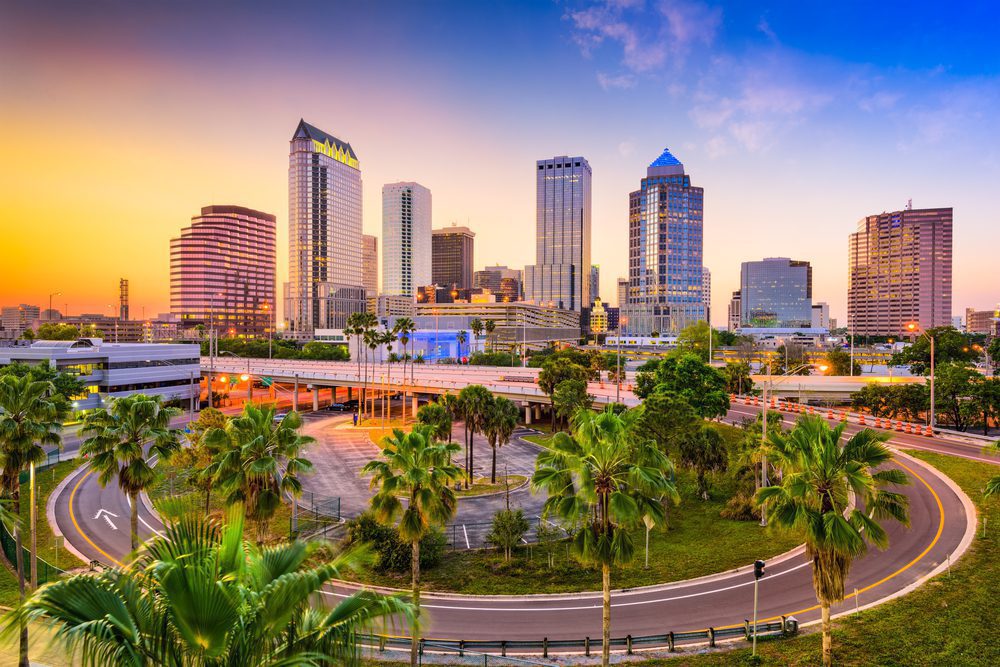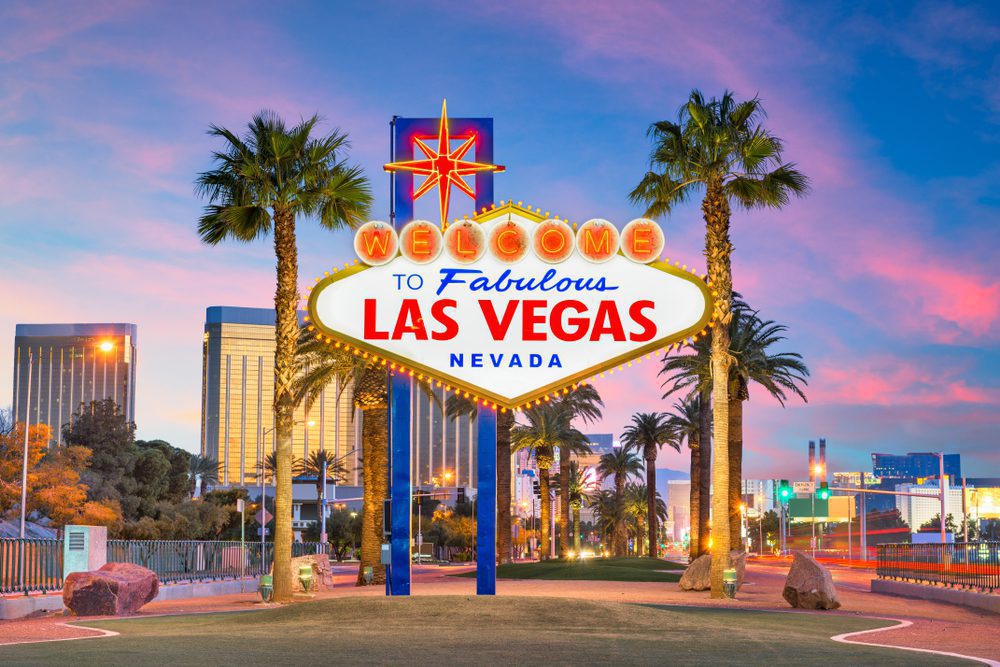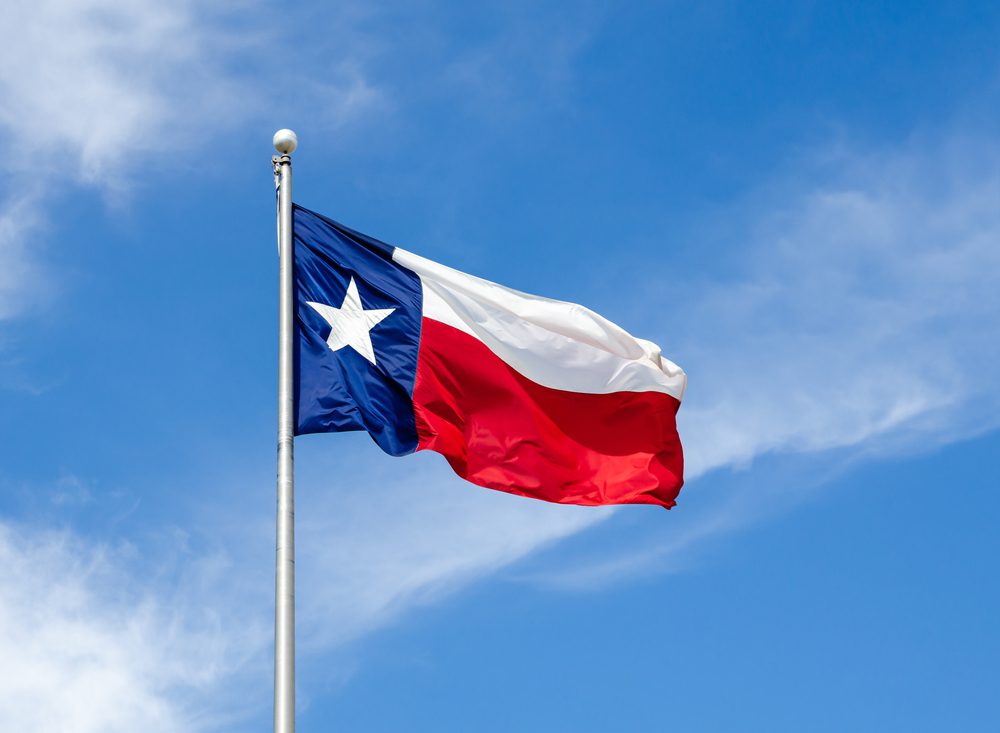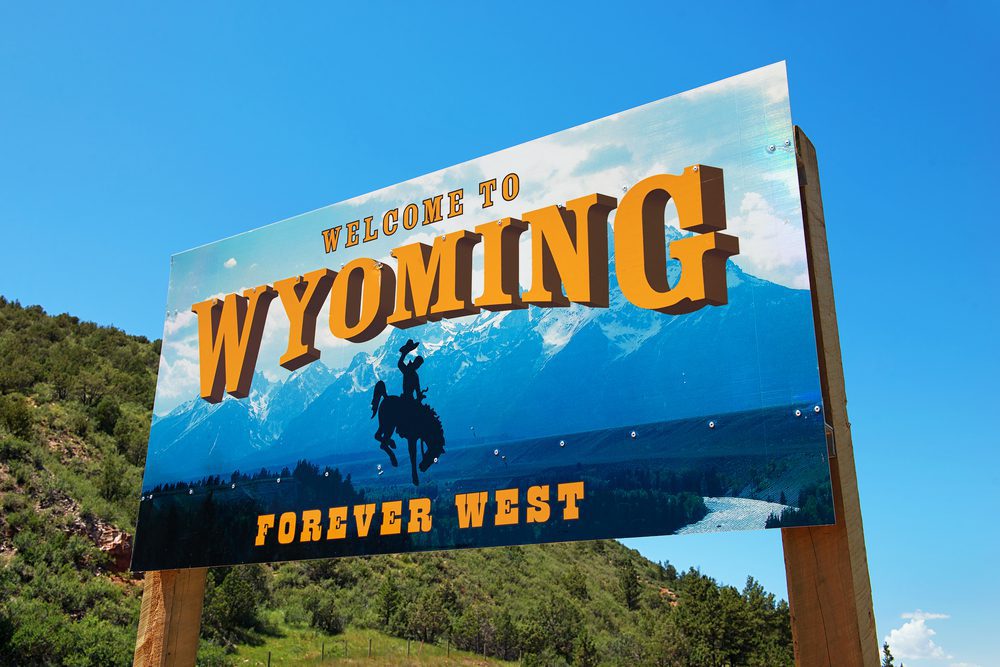Advertiser Disclosure: Many of the companies featured here provide compensation to us. This is how we maintain our free service for consumers. Compensation, along with hours of in-depth editorial research, determines where & how companies appear below.
Everyone’s goal is to lower their tax bill. You could accomplish this by living in a state that doesn’t charge income taxes. Currently, seven states levy no state income tax: Alaska, Florida, Nevada, South Dakota, Tennessee, Texas, and Wyoming. The state of Washington taxes investment income and capital gains, but only certain high earners are taxed on them.
As of January 1, 2022, Tennessee has abolished its Hall income tax, which previously taxed investment and interest income. Meanwhile, New Hampshire taxes investment and interest income, but plans to phase it out starting in 2023. By that time, nine states will not have income taxes.
- Earned wages are not taxed in Alaska, Florida, Nevada, South Dakota, Tennessee, Texas, Washington, and Wyoming, while state income taxes are not levied in New Hampshire.
- There are often other taxes or services reduced in states without an income tax to make up for the lost revenue.
- Rather than relying solely on the income tax rate alone to determine a state’s affordability, it might be more accurate to look at the state’s total tax burden, which is calculated as a percentage of income paid in state and local taxes.
- A state’s cost of living, healthcare, and job opportunities are also important factors in determining how expensive it is.
- The state of Alaska had the lowest tax burden in the nation in 2021, but it was also one of the most expensive to live in.
In addition to pulling up stakes and hiring a moving company, you might want to consider the following:
- Property taxes, excise taxes, and sales taxes
- Cost-effectiveness
- A state’s ability to invest in social services, such as infrastructure, education, and healthcare, when taxes are lower
No-tax states
This table illustrates the differences between states that do not have an income tax. As a percentage of personal income, each state’s total tax burden (state income taxes, sales taxes, and property taxes) is shown, followed by a ranking (from best to worst) among all 50 states.
According to U.S. News & World Report, the state ranks high on its affordability ranking, which includes housing and living costs. The state also ranks high on its ranking on the “Best States to Live In” list.
According to the latest reports, the tax burden for 2021 will be the highest, affordability will be the highest, and the best state to live in will be the best in 2021.
Alaska

Tax Burden: 5.10 %
Among the 50 states, Alaska has neither a state income tax nor a state sales tax. Alaskans pay just 5.10% of their personal income towards state and local taxes, the lowest rate of all states.
An annual dividend payment is made to all Alaskans by the Alaska Permanent Fund Corporation from revenue and investment earnings from mineral lease rentals and royalties. The per citizen dividend payment for 2021 was $1,114.
Despite its remote location, Alaska has a high cost of living. Alaska also has the second-highest beer tax at $1.07 per gallon, only surpassing Tennessee in beer taxes. According to U.S. News & World Report, it ranks 47 out of 50 for affordability, and 45 out of 50 for “Best States to Live In.”
There is no state in the U.S. that has higher and faster-rising healthcare costs than Alaska. Nevertheless, it spent the most money on healthcare, excluding the District of Columbia, in 2014-the most recent year for which the Centers for Medicare and Medicaid Services (CMS) Office of the Actuary reported statistics.
It also spent the most on education of any state in the Western U.S. in 2019. In 2017, Alaska’s infrastructure received a grade of C- from the American Society of Civil Engineers (ASCE).
Florida

There is a total tax burden of 6.97%
The total tax burden in Florida is just 6.97%, making it the sixth-lowest in the nation. Florida’s sales and excise taxes are higher than the national average, but its total tax burden is lower than the national average.
The state ranks 31st in affordability, as it has higher housing costs than average. Still, Florida is the 10th-best state to live in, according to U.S. News & World Report.
Florida had a school system spending per pupil of $9,645 in 2019, making it one of the lowest states in the country. The ASCE awarded Florida a C grade in 2021. The Education Law Center gave Florida the same grade six years prior for its fairness in distributing state school funding. Healthcare spending per capita in 2014 was $8,076, $31 more than the national average.
Nevada

Tax burden: 8.23%
Most of its money comes from sales taxes on everything, like groceries and clothes, taxes on alcohol and gambling, and taxes on hotels and casinos. As a result, Nevadans are taxed a total of 8.23% of their personal income, the second-highest on this list. However, when compared to all states, it is still ranked 22 out of 50.
While living and housing costs are high, Nevada ranks 41st on the U.S. News and World Report list of “Best States to Live In.”
In 2019, Nevada spent $9,344 per pupil on education, the fourth-lowest in the western region. In 2018, ASCE graded Nevada’s infrastructure a C.
In 2015, Nevada not only got an F from the Education Law Center, but it was also the worst state in terms of how state school funding was shared. Among all states on this list, Nevada spent the least per capita on healthcare in 2014, at $6,714 per capita.
South Dakota

Tax Burden: 7.37%
South Dakota, like many states that do not have income taxes, generates revenue through other forms of taxation, such as taxes on cigarettes and alcohol. The Lakota Sioux and the Black Hills are home to the highest sales tax rates and the highest property tax rates in the country. The Atlantic says that South Dakotans don’t have to pay income taxes because the state is home to several major credit card companies and has high property and sales tax rates.
According to WalletHub, South Dakotans pay just 7.37% of their income in taxes, ranking the state eighth in terms of taxes overall. U.S. News & World Report ranked the state 14th in terms of affordability, and 15th in terms of “Best States.”.
In 2014, South Dakota spent $8,933 per capita on healthcare, the 14th highest in the country. While it spent more on education in 2019, it spent less than any neighboring Midwestern state at $10,139 per pupil. Furthermore, its school funding distribution received a grade of F.
In spite of the fact that much of South Dakota’s infrastructure is deteriorated, 17% of bridges are rated structurally deficient and 90 dams have high hazard potential, South Dakota has not received an official letter grade from ASCE.
Texas

Total Tax Burden: 8.19%
In its constitution, Texas bans personal income taxes. However, because infrastructure and services must be paid for somehow, Texas relies on revenue from sales and excise taxes.
Several jurisdictions charge a sales tax of 8.25%. Property taxes are also higher than in most states, which results in a total tax burden of 8.19% of personal income. Texas still has a low overall tax bite, ranking 19th in the nation. Despite ranking 22nd for affordability in the nation, Texas was ranked 31st on the “Best States to Live In” list by U.S. News & World Report.
Among the 17 Southern states, Texas spent $9,827 per pupil on education in 2019, and its school funding distribution in 2015 received a D grade. The ASCE awarded it a grade of C for its infrastructure in 2021. In 2014, Texas spent $6,998 per capita on healthcare, the seventh-lowest amount in the country.
State and local tax deductions (SALT) are capped at $10,000 per year by the Tax Cuts and Jobs Act, which could have a less significant impact on residents of no-tax states than on those in high-tax states.
Washington

Total Tax Burden: 8.34%
A large number of major employers are located in Washington, thanks to the absence of state corporate income taxes (high-income earners must pay capital gains taxes), as well as a young population. There are high sales and excise taxes in Washington, and gasoline is more expensive in Washington than in most other states. The state ranks 26 out of 50, with a total tax burden of 8.34%.
There is a high cost of living and housing in Washington, which places the state at 44th in terms of affordability. But some residents might not care because their state has once again been ranked as the best place to live for 2021 by U.S. News & World Report.
The national average for healthcare in 2014 was $7,913 per capita in Washington. While it received a C grade four years earlier for its school funding distribution, it spent $14,223 per pupil in 2019, it spent more than most in education. As of 2019, Washington received the same grade for its infrastructure.
Wyoming

Total Tax Burden: 6.14%
Compared to Alaska, which has approximately one human being per square mile, Wyoming has an estimated six people per square mile, the second least densely populated state. State income taxes for individuals and corporations are zero, retirement income taxes are not, and sales taxes are low. As a percentage of personal income, the state has a total tax burden of 6.14%, ranking third lowest.
In order to compensate for a lack of personal income tax, Wyoming taxes natural resources, primarily oil. On U.S. News & World Report’s list of “Best States to Live In,” the state ranks 33rd in affordability and 35th in quality of life.
Wyoming, with $16,304 per pupil in 2019, was second only to Alaska in spending on education in the Western U.S. It also received an A grade for its school funding distribution in 2015.
Wyoming’s healthcare spending in 2014 was much lower, at $8,320 per capita. Although Wyoming hasn’t received an official letter grade for its infrastructure yet, the ASCE found that 6.9% of its bridges are structurally deficient and 99 of its dams have a high hazard potential.
Tennessee

Burden of total taxes: 5.74 %
Prior to 2016, Tennessee taxed investments, including dividends and interest, but not wages. A 2016 law included a plan to reduce unearned income taxes by 1% per year until 2021, when the tax is abolished. In order to make up for this shortfall, Tennessee imposes high sales taxes and the highest beer tax in the nation at $1.29 per gallon.
With the new law fully in place, Tennessee hopes to attract retirees who rely heavily on income from investments. 5.74% of the state’s total taxes are paid, making it the second-lowest in the country. On the U.S. News & World Report “Best States to Live in” list, Tennessee ranks 17th overall and 29th overall in affordability.
In 2019, Tennessee ranked just above Texas in terms of education spending in the southern U.S. It also distributed its school funding more fairly than Texas, earning the Equality State a C in 2015.
With healthcare spending per capita of $7,372, Tennessee ranked 39th in 2014. The state’s infrastructure hasn’t been officially graded yet, but the American Society of Civil Engineers (ASCE) found that 4.4% of its bridges are structurally deficient and 276 of its dams pose a high risk.
9. New Hampshire

Total Tax Burden: 6.84%
Earned income in New Hampshire is not subject to tax, but dividends and interest are. The New Hampshire Senate passed legislation phasing out the investment income tax over a five-year period, with full implementation by 2023. The state has no state sales tax, but levies excise taxes, including taxes on alcohol, and its average property tax rate of 1.86% of property values is the third highest in the country.
According to WalletHub, New Hampshire’s total tax burden is just 6.84%, ranking it fifth in the nation. It ranks fourth on U.S. News and World Report’s “Best States to Live In” list and ranks 38th in affordability.
Although New Hampshire spent more on education than any other state on this list at $17,462 per pupil in 2019, its outlay was among the lowest in the northeastern region of the U.S. The Education Law Center rated it D for school funding distribution in 2015.
Healthcare spending in New Hampshire is ninth highest in the country at $9,589 per capita in 2014.40 It received a marginally better grade of C- for its infrastructure in 2017.
Which States Have No Taxes?
As of 2022, Alaska, Florida, Nevada, New Hampshire, South Dakota, Tennessee, Texas, Washington, and Wyoming are the only states without a state income tax. Washington also imposes a state capital gains tax.
What is the purpose of a state tax?
The U.S. Constitution gave the federal government the right to charge taxes to its citizens. Also, each state could have any tax it wanted, as long as it wasn’t against the U.S. Constitution or its own state constitution. By collecting taxes, fees, and licenses, these states fund their governments.
Is there a state that doesn’t tax retirement distributions?
There are 12 states that do not tax retirement distributions. Illinois, Mississippi, and Pennsylvania do not tax 401(k) plans, IRAs, or pensions. Alaska, Florida, Nevada, New Hampshire, South Dakota, Tennessee, Texas, Washington, and Wyoming are the nine remaining states that don’t pay any state taxes. Alabama and Hawaii do not tax pensions either, but 401(k) and IRA withdrawals are taxed.
Social Security benefits are taxed in which states?
In the United States, only 12 states tax Social Security benefits: Colorado, Connecticut, Kansas, Minnesota, Missouri, Montana, Nebraska, New Mexico, Rhode Island, Utah, Vermont, and West Virginia.
Conclusion
In spite of the challenges no-tax states face, some states manage to find a balance between low taxes, affordability, and providing a great place to live. Others struggle. However, one thing is clear: low taxes alone do not tell the whole story.

